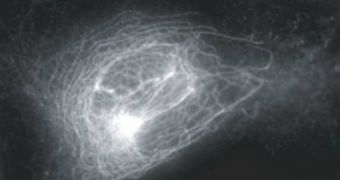The protein 'atlastin' was linked to a rare genetic condition in the past, but experts had no idea that it played any other role in the human body. Now, a team of experts at the Rice University, led by associate professor of biochemistry and cell biology James McNew, has recently discovered that the protein actually plays a critically important part in building and maintaining healthy cells. The study that the team published in the latest issue of the journal Nature also shows that atlastin works by fusing intracellular membranes in a previously undocumented way.
“If you'd asked me a year ago whether this was possible, I would have said, 'No.' In fact, that's exactly what I told Andrea Daga when we first spoke about the idea a year ago,” McNew, who has also been the co-author of the new study, says. The expert has spent the last 15 years studying SNARE proteins (Soluble NSF Attachment Protein Receptor), which essentially mediate vesicle fusion inside cellular membranes. This process is fundamental to life, and takes place several thousand times over each second, in every cell in our body.
“It is fitting that the discovery of a new protein capable of fusing membranes comes 10 years after the demonstration that SNAREs can fuse lipid bilayers,” Daga, who is a researcher at the Eugenio Medea Scientific Institute, in Conegliano, Italy, and also a co-author of the new study, explains.
“Prior to this, there were only two defined ways in which you could take biological membranes and put them together in a specific way. Atlastin is the third, and it's the only one that requires enzymatic activity, so it's distinctly different,” McNew adds. For its experiments, the team used fruit flies, and studied the effects of atlastin on their bodies. The reason why these specific insects were chosen is because the protein acts very similar in humans and fruit flies.
The researchers created modified versions of the protein and injected them into flies. They found the largest effects on the endoplasmic reticulum (ER), which is a system of interconnected membrane tubes and chambers that's critical for normal cell function. In insects that had received an over-expressed dose of atlastin, the ER was overdeveloped, while, in those with too little of the protein, the reticulum was fragmented and short-lived.
“The endoplasmic reticulum is an ever-changing environment. It grows. It retracts. It expands. It collapses. It's highly dynamic, and for that to be the case, there has to be a mechanism by which it can grow new pieces and connect those pieces together. That's where the fusion comes in,” McNew explains. “We hope the findings lead to a better understanding of hereditary spastic paraplegia (HSP), the genetic disorder that atlastin has been linked with,” Daga concludes.

 14 DAY TRIAL //
14 DAY TRIAL //